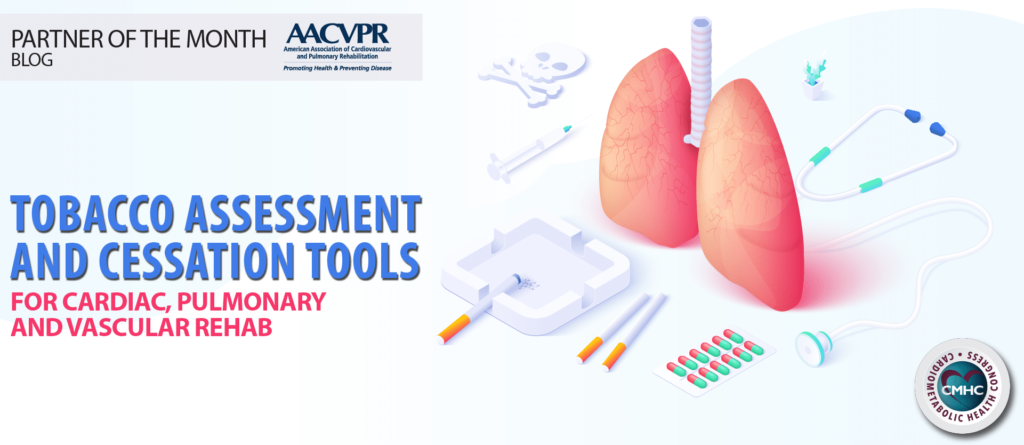Association of Cigarette and E-Cigarette Use with CVD Biomarkers

Although the prevalence of cigarette smoking has significantly declined from nearly 21% of the U.S. adult population identifying as smokers in 2005 to only 14% today, an estimated 34.1 million adults still currently smoke cigarettes. In addition, many have transitioned to the use of electronic cigarettes in hopes of reducing cardiometabolic risks. However, the cardiovascular […]
Tobacco Assessment and Cessation Tools for Cardiac, Pulmonary and Vascular Rehab

Partner of the Month: AACVPR For those quitting smoking, change can be very hard. Helping someone quit smoking can save his or her life, but for health care professionals trying to spark that change within their patient, it can be difficult to know exactly how to communicate. Mayo Clinic Rochester Shawn Leth, M.Ed, CEP, and […]
Certified Diabetes Educators Expand Smoking Cessation Programs

Although the noxious effects of smoking are well-known and rates of tobacco users are declining, an estimated 38 million American adults still smoke cigarettes. The deleterious consequences of cigarette use are especially evident in the cardiometabolic field, with smokers facing significantly increased risks of cardiovascular disease, hypertension, and diabetes. Not only are smokers 30% to […]
Elevated Risk for Peripheral Artery Disease Tied to Smoking

Characterized by the reduction of blood flow, limb pain, poor wound healing, and other symptoms, peripheral artery disease (PAD) affects more than 10% of Americans over the age of 69. Although the majority of cases remain undiagnosed and there is a lack of public awareness surrounding the condition, prevalence is high – the CDC estimates about […]
The Harms from Cigarette Smoking

A large study from the BMJ indicates that smokers must quit cigarettes, rather than simply cut back on them, to significantly lower their risk of heart disease and stroke. Statistics demonstrated that those who smoked even one cigarette each day were still about 50% more likely to develop CVD, and 30% more likely to have […]













